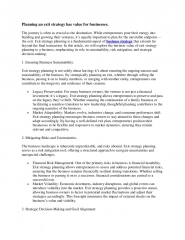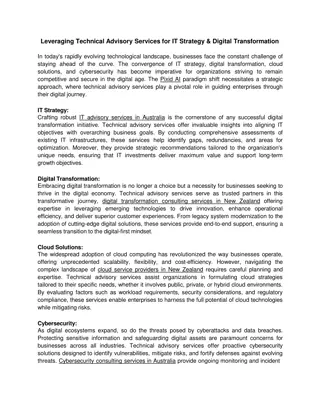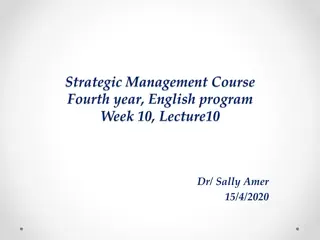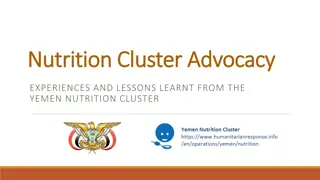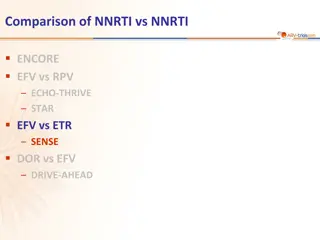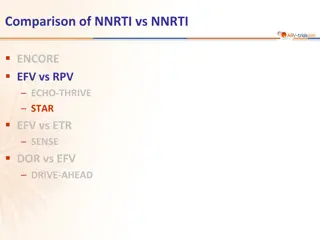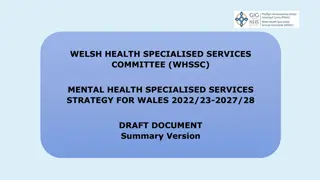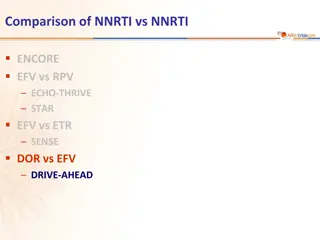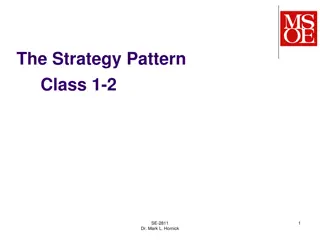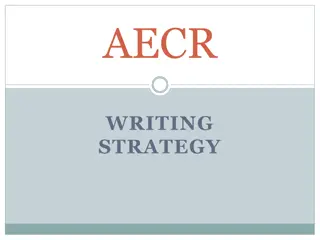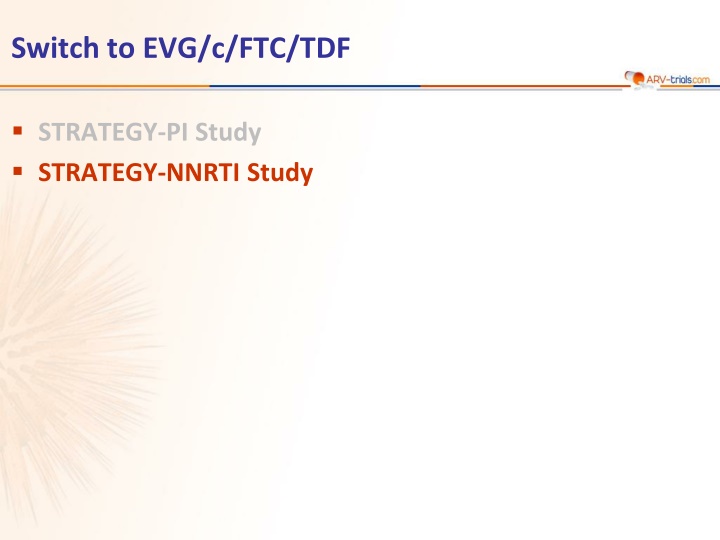
Switch to EVG/c/FTC/TDF Strategy in HIV Study
Explore the switch from NNRTI to EVG/c as part of a study focusing on HIV patients aged 18 years and older, maintaining viral load suppression. The study aims to evaluate the efficacy and safety of switching antiretroviral regimens, with a focus on maintaining HIV RNA levels below a specific threshold. Detailed outcomes and patient characteristics are discussed in this informative study.
Download Presentation

Please find below an Image/Link to download the presentation.
The content on the website is provided AS IS for your information and personal use only. It may not be sold, licensed, or shared on other websites without obtaining consent from the author. If you encounter any issues during the download, it is possible that the publisher has removed the file from their server.
You are allowed to download the files provided on this website for personal or commercial use, subject to the condition that they are used lawfully. All files are the property of their respective owners.
The content on the website is provided AS IS for your information and personal use only. It may not be sold, licensed, or shared on other websites without obtaining consent from the author.
E N D
Presentation Transcript
Switch to EVG/c/FTC/TDF STRATEGY-PI Study STRATEGY-NNRTI Study
STRATEGY-NNRTI Study: Switch NNRTI to EVG/c Design Randomisation* 2 : 1 Open-label W48 W96 HIV+ 18 years On FTC + TDF + NNRTI HIV RNA < 50 c/mL > 6 months No virologic failure Genotype testing before ART with no resistance to study drugs Integrase inhibitor na ve eGFR > 70 mL/mim N = 292 Switch to EVG/c/FTC/TDF N = 147 Continue NNRTI + FTC + TDF * Randomisation stratified by EFV use at screening Endpoints Primary: proportion of patients maintaining HIV RNA < 50 c/mL at W48 (mITT, snapshot) ; non-inferiority if lower margin of a two-sided 95% CI for the difference = -12%, 85% power. If non-inferiority and lower margin > 0, assessment for superiority Secondary: proportion of patients maintaining HIV RNA < 50 c/mL at W48 (TLOVR algorithm), CD4, safety, tolerability to W96 Pozniak A. Lancet Infect Dis 2014;14:590-9 STRATEGY-NNRTI
STRATEGY-NNRTI Study: Switch NNRTI to EVG/c Baseline characteristics and patient disposition EVG/c/FTC/TDF N = 291 43 8% 5 90% NNRTI + FTC + TDF N = 143 39 6% 5 91% Median age, years Female Time since HIV diagnosis, median years On first ARV regimen NNRTI at randomisation Efavirenz (coformulated EFV/FTC/TDF) Nevirapine Rilpivirine Etravirine CD4 cell count (/mm3), median Hepatitis B / hepatitis C coinfection Discontinuation by W48 80% (76%) 16% 3% 1% 561 2% / 4% 22 74% (70%) 19% 7% 0 562 2% / 1% 18 Pozniak A. Lancet Infect Dis 2014;14:590-9 STRATEGY-NNRTI
STRATEGY-NNRTI Study: Switch NNRTI to EVG/c Virologic outcome at W48 (mITT, snapshot) EVG/c/FTC/TDF NNRTI + FTC + TDF HIV RNA < 50 c/mL HIV RNA 50 c/mL No virologic data % 93 100 88 80 60 40 11 20 6 1 1 0 N = 3 N = 1 Difference (95% CI) = 5.3% (-0.5 to 12.0) Pozniak A. Lancet Infect Dis 2014;14:590-9 STRATEGY-NNRTI
STRATEGY-NNRTI Study: Switch NNRTI to EVG/c HIV RNA < 50 c/mL Sensitivity and secondary analysis EGV/c/FTC/TDF NNRTI + FTC + TDF Per-proctol 99% 99% Difference: 0.1% (95% CI: - 2.1 to 3.5) ITT-TLOVR 92% 87% Difference: 5.0% (95% CI: -1.1 to 12.1) One participant in each group met the criteria for resistance testing (HIV RNA > 400 c/mL at virologic failure or early discontinuation) No emergence of resistance Both remained on study treatment and achieved HIV RNA < 50 c/mL after W48 Pozniak A. Lancet Infect Dis 2014;14:590-9 STRATEGY-NNRTI
STRATEGY-NNRTI Study: Switch NNRTI to EVG/c Virologic sucess overall and by subgroup at W48 (mITT) n/N 271/290 126/143 Overall 107/114 62/74 Age < 40 years 164/176 64/69 Age > 40 years 251/267 119/134 Male 20/23 7/9 Female 216/230 99/109 White 55/60 27/34 Non-white 214/231 91/106 Efavirenz 57/59 35/37 Non-efavirenz On first regimen at baseline On second regimen at baseline 245/262 114/130 25/27 11/12 0 10 20 30 Virological success (%) 40 50 60 70 80 90 100 -20 -10 0 10 20 30 40 50 Difference (%) Favours switching Favours not switching No-switch group Switch group Pozniak A. Lancet Infect Dis 2014;14:590-9 STRATEGY-NNRTI
STRATEGY-NNRTI Study: Switch NNRTI to EVG/c Adverse events and grade 3-4 laboratory abnormalities EVG/c/FTC/TDF NNRTI + FTC + TDF Any adverse event, 81% 75% Grade 3 or 4 AE 7% 6% Serious adverse event 5% 4% Discontinuation because of AE N = 6 (2%)* N = 1 (1%)** Death N = 1 0 AE occurring more frequently in one group 14% 23% Headache (p = 0.03) 3% 1% Nausea (p = 0.05) 2% 6% Cough (p= 0.04) 2% 1% Fatigue (p = 0.02) 2% 1% * neuromuscular symptoms, suicide, dysgueusia, prurigo, Fanconi syndrome, increased creatinine ** altered mood Pozniak A. Lancet Infect Dis 2014;14:590-9 STRATEGY-NNRTI
STRATEGY-NNRTI Study: Switch NNRTI to EVG/c Other safety data Incidence and prevalence of headache and nausea became similar between groups by week 12 Grade 3-4 laboratory abnormalities : 10% in the switch group vs 14% in the no-switch group Creatinine increase in switch group at week 4, stabilizing up to week 48 (median +11 mol/L) Small decrease in HDL-cholesterol in the switch group vs no change in the no-switch group In the subgroup switched form EFV + FTC + TDF to EVG/c/FTC/TDF Improvement in lipids HIV Symptom Index : improvement of CNS symptoms Higher treatment satisfaction score at W4 and W24 Pozniak A. Lancet Infect Dis 2014;14:590-9 STRATEGY-NNRTI
STRATEGY-NNRTI Study: Switch NNRTI to EVG/c Conclusion Coformulated EVG/c/FTC/TDF is non-inferior to continuing an existing regimen of NNRTI plus FTC and TDF in virologically suppressed, HIV- infected adults with no history of virological failure or resistance to FTC or TDF. Low frequency of virologic failure and absence of emergent resistance in the group switched to EVG/c/FTC/TDF Rare discontinuations because of adverse events Fatigue, cough, headache and nausea were more frequent in the switch group ; Rates of CNS symptoms decreased in patients switched from EFV Increase in creatinine similar to that of phase 3 of EGV/c/FTC/TDF Moderate improvement in lipids in patients switched from EFV EVG/c/FTC/TDF is a switch option in virologically suppressed patients with no history of virological failure on an NNRTI regimen, when its continuation is not suitable Pozniak A. Lancet Infect Dis 2014;14:590-9 STRATEGY-NNRTI

